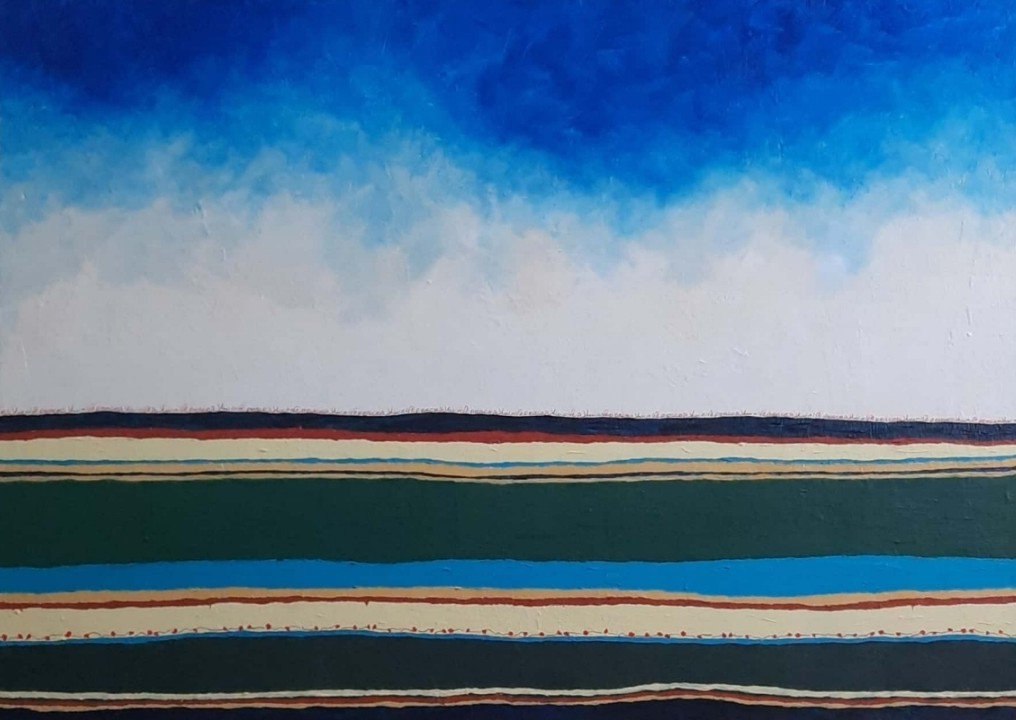A Powerful Artistic Influence
Among the works of artists I admire, one that has always stood out to me is Kazimir Malevich’s “Red Cavalry” (1932)—painted in response to the 1917 October Revolution and the Russian Civil War. In the original, red silhouettes of cavalry soldiers gallop on horseback along the horizon, capturing both the tension and the movement of a turbulent era.
From History to the Present
My own painting, “Hope for Peace,” was created in the aftermath of the tragic events of October 7, 2023, when Israel faced unprecedented violence and loss. My work emerges from a place of mourning, resilience, and a deep longing for a better future.
Holding on to Hope
Despite the pain and devastation, I believe we must never abandon hope and the dream of peace. The tragedy is that, before peace arrives, too many—both civilians and soldiers—are forced to make the ultimate sacrifice. This reality weighs heavily on the painting’s message.
A Message Hidden in the Horizon
If you look closely at the horizon in the painting, you’ll see the word “Peace” written in three languages—Hebrew, Arabic, and English—symbolizing a universal hope that transcends borders, cultures, and conflicts.
Symbolism in Red
Beneath the layers of paint at the bottom of the canvas, I painted red anemones—a flower that, in Israeli culture, often symbolizes fallen soldiers and the sacrifice of life. The deep red blooms stand as a quiet tribute to those who gave everything, while the sky above them carries the hope that their loss will not be in vain.
- Sharon
Sharon's Art
 Hope For Peace/A Gesture to Malevich 70x50 cm Acrylic & Pen
Hope For Peace/A Gesture to Malevich 70x50 cm Acrylic & Pen